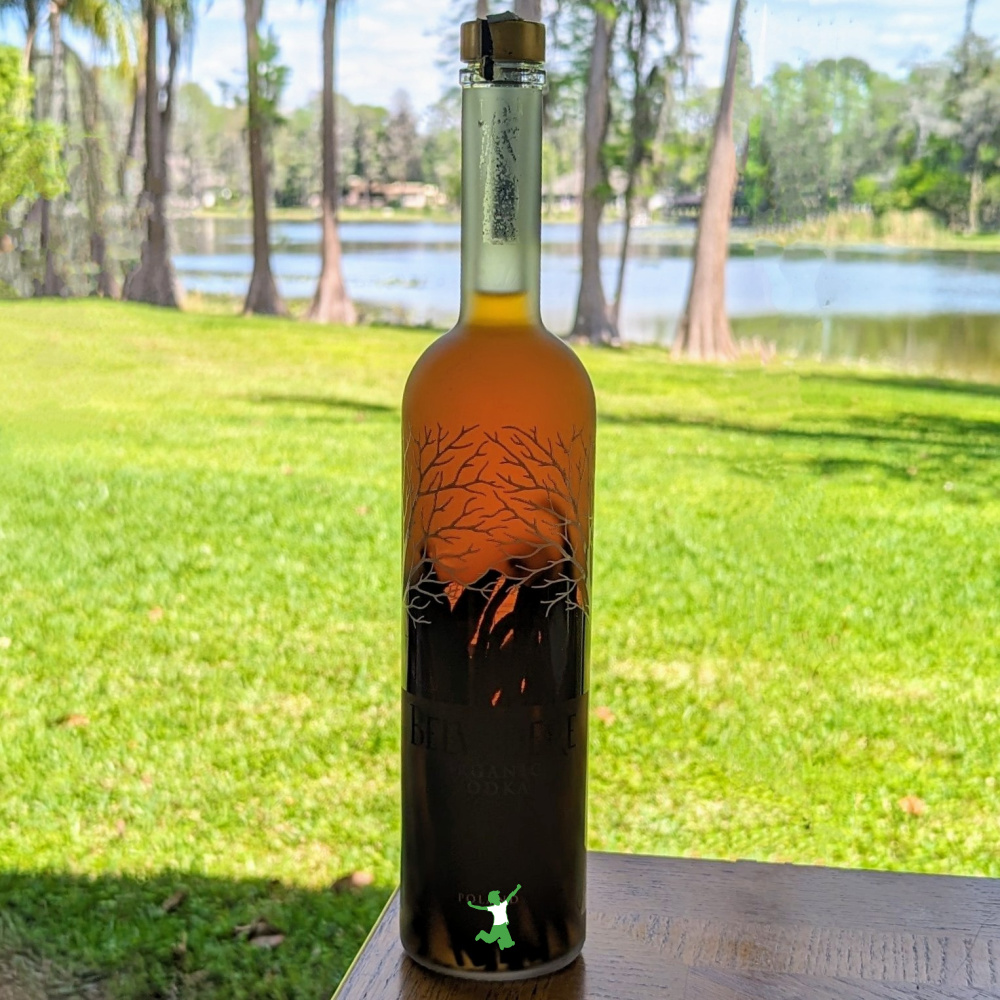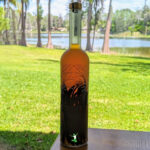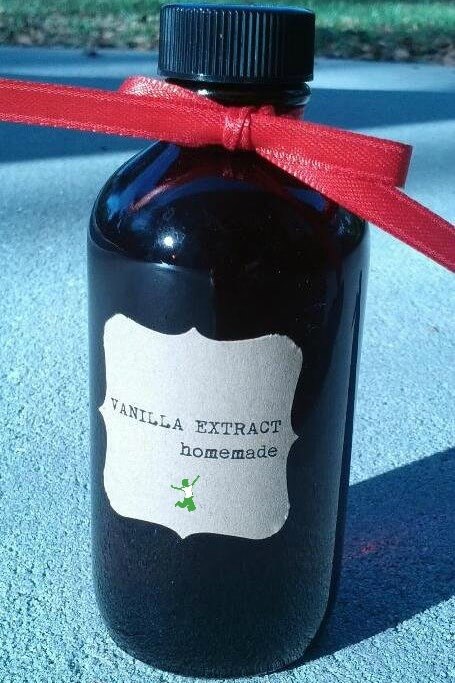
One of the most lovely gifts I’ve ever received during the Holidays was a bottle of homemade vanilla extract. The picture is shown above. I was very touched because I really appreciate the thoughtfulness of handmade gifts.
In addition, anyone who spends a lot of time in the kitchen knows that vanilla is a very expensive flavoring that is used in so many recipes!
In fact, vanilla is the second most expensive spice after saffron due to the intensive labor required to grow the vanilla seed pods. Could this be why saffron rice is far less popular than plain ‘ole yellow rice?
Certainly, this is the case with vanilla extract. The cost is a big reason why food manufacturers commonly use fake vanilla flavoring instead of the real thing.
Which Type of Vanilla Beans Makes the Best Extract?
My friend Lindsay prepared several test batches of vanilla extract to decide which she thought tasted best to use for gifts.
She tried several different types of vanilla beans before settling on Near Gourmet Bourbon Vanilla Beans. These beans are native to the island of Madagascar just off the coast of Africa. “Near Gourmet” means that they actually split on the vine (Grade B) or during the curing process.
Commercial vanilla extract manufacturers prefer “splits” because often they have a higher vanillin content. Typically, this is 0.23 grams of vanillin per 100 ml versus the usual 0.18 grams per 100 ml for high-quality extract grade beans.
In addition, these vanilla beans have a higher moisture content than the typical beans used to make commercial vanilla extract.
The difference is roughly 30% versus 20% for commercial beans. If these beans hadn’t split at some point along the way, they would be considered gourmet grade (Grade A), which are more expensive.
Is Organic Necessary when making Vanilla Extract?
Lindsay’s research on vanilla beans also turned up information on the production of vanilla beans. She was delighted to learn that nearly all vanilla beans are grown without the use of synthetic fertilizers or pesticides. The reasons are threefold.
First, vanilla only requires a light composting of forest materials in order to thrive. Secondly, vanilla has few insect or animal predators as long as it is properly cultivated.
And finally, the mostly small farms that grow vanilla do not have the resources for chemical treatments. In addition, they cannot afford the expensive fair trade or organic certifications. (1)
As a result, Lindsay decided that paying the premium for organic vanilla beans was unnecessary.
Gluten-Free
If you decide to make vanilla extract to give as a gifts, then I would recommend using potato vodka. This will ensure a gluten free product. It will be usable even for those friends and family who are avoiding gluten or have a grain allergy.
Lindsay was kind enough to share her vanilla extract recipe with me and said it was fine to share here as well. This ridiculously easy method on how to make vanilla extract will taste far better than even the organic stuff at the store. It will possibly save you quite a bit of money too!
Make Twice as Much with this Trick
I’ve discovered a trick to save even more money when you make your own vanilla.
When your new bottle of extract is ready, pour off about half into small bottles (see below) and refill the big bottle with fresh vodka. Leave for the designated period of time one more time.
You will get two large bottles of vanilla extract for the price of one set of vanilla beans!

Homemade Vanilla Extract Recipe
This homemade vanilla extract recipe is ridiculously easy and will save you lots with this simple DIY method. Gluten free too and makes a great gift!
Ingredients
- 1 bottle potato vodka 750 ml (25 ounces)
- 18 vanilla beans “near gourmet” splits
Instructions
-
Place the vanilla beans straight into the bottle of vodka and replace the cap. Slicing each bean lengthwise first is fine but isn’t necessary and doesn’t seem to make much of a difference to the flavor.
-
Note that each bean should be fully submerged in the vodka.
-
Leave the vodka to slowly extract the vanilla flavor from the beans for at least 6 weeks in a dimly lit place like a cabinet that isn’t too warm. Ideally, 8 weeks is required for the majority of the vanilla flavor to be extracted from the beans. Gently shaking the bottle occasionally will help move the process along.
-
After 6-8 weeks, carefully remove the vanilla beans and pour the vanilla extract into 8 oz amber bottles if you will be giving to family or friends. If making the vanilla extract for yourself, simply place the vodka bottle into the pantry (appropriately labeled) for your personal use.
Recipe Notes
If you use a different size bottle of vodka, note that you need 6 whole vanilla beans for every 8 ounces of vodka to make vanilla extract. Adjust the number of beans as necessary.









How can you tell if a Vodka is “Potato” Vodka or not?
This recipe looks great! Can’t wait to try it! Thanks Sarah for promoting this!
You can also top it off as it starts to get low … our beans re-steeped several times!
I’ve also been doing this for years. I just use the cheapest vodka from Trader Joe’s (I think it’s about $4.99 or 5.99) and stick the vanilla beans (split first) in it.
Vanilla extract is also good for sore teeth. So this will be great for both kitchen and medicine cabinet!
You can buy the pods on ebay for a very reasonable price.
Potato vodka…where does one find this?
I’ve been making my own vanilla for a year and a half but before that I used about a fourfold vanilla from an old job that was definitely stronger. So for my jar of extract, every time I used up a vanilla been I added it to the jar and just let them accumulate. There is a certain amount/percentage of beans you need to add to be a true extract and not just a vanilla flavored liqueur. Finally, recently I added about a tablespoon of vanilla bean powder (powdered whole vanilla beans) from Mountain Rose Herbs and my vanilla finally tastes like a true at least double vanilla extract. To that end I would recommend chopping up the vanilla into little bits to increase the surface area for extraction, especially if you are going to decant the end product into other bottles for use anyway. The flavor will be even better and stronger.
Shannon, would u be willing to share the name of it?
We order ours from Mexico because the bottle we bought ran out and I was so sad, so we found it online. It’s a liter, and inexpensive, and oh my goodness, heavenly.
My sister made some and she gave some to me and I loved it. Unfortunately I already used it all but it was a real treat.
When you say 6 beans, is that the whole thing? Or the little bean pods inside the bean? This always confuses me.
The long intact beans are called pods. I refer to the tiny vanilla flecks that are inside the pod, as caviar.